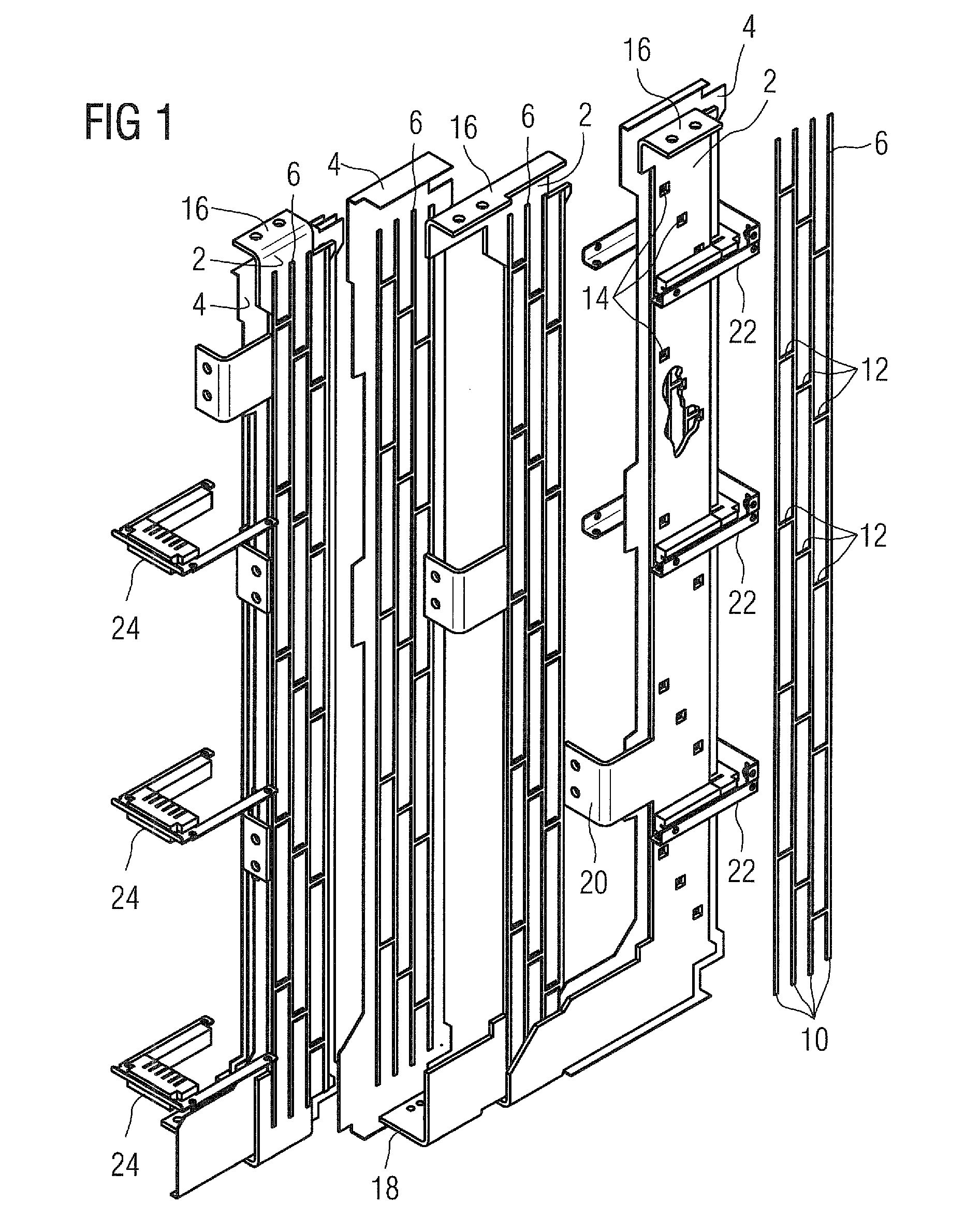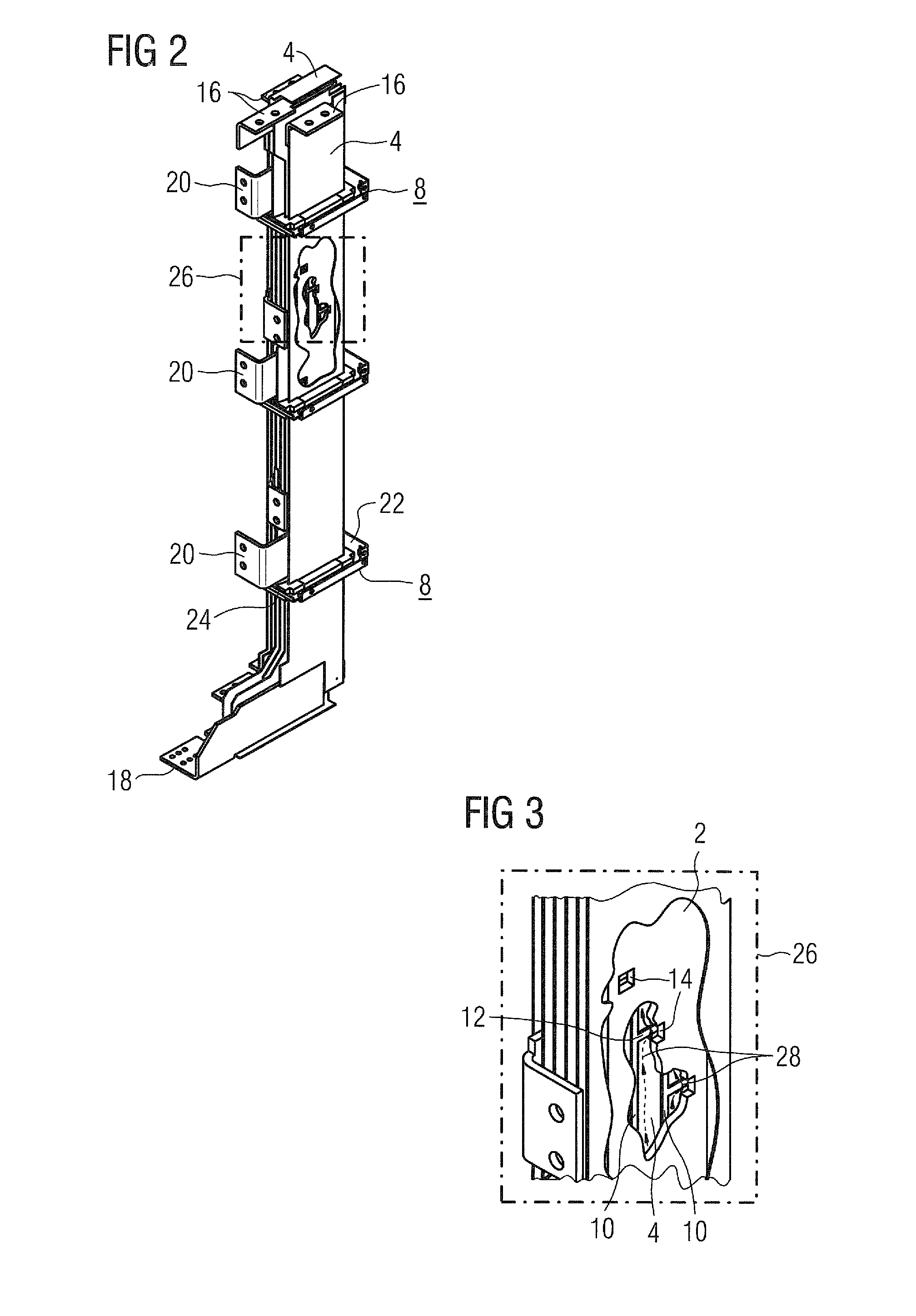Busbar pack
a busbar pack and pack body technology, applied in the field of busbar packs, can solve the problems of high thermal load or overload, inability to inability to adequately cool down the busbar pack, etc., and achieve the effect of reducing the thermal load
- Summary
- Abstract
- Description
- Claims
- Application Information
AI Technical Summary
Benefits of technology
Problems solved by technology
Method used
Image
Examples
Embodiment Construction
[0018]In FIG. 1, 2 denotes a busbar, 4 an isolating bar, 6 a bar which is in the form of a mesh and 8 a two-part apparatus. As can be seen from this illustration, each bar 6 which is in the form of a mesh is arranged on a flat face of each busbar 2. This means that each busbar 2 is provided with bars 6 which are in the form of meshes on both sides. In order to keep the complexity for cooling the busbar pack as low as possible, it is sufficient for only one inner busbar 2 in the busbar pack to be provided with bars 6 which are in the form of meshes, on both sides. This means that, in the case of a three-phase busbar pack, only the inner busbar 2 of this busbar pack is provided with the additional bars 6 which are in the form of meshes. The illustrated bars 6 which are in the form of meshes in this illustration have four longitudinal webs 10 and fifteen transverse webs 12. These transverse webs 12 separate the longitudinal webs 10 from one another. With four longitudinal webs 10, thre...
PUM
 Login to View More
Login to View More Abstract
Description
Claims
Application Information
 Login to View More
Login to View More - R&D
- Intellectual Property
- Life Sciences
- Materials
- Tech Scout
- Unparalleled Data Quality
- Higher Quality Content
- 60% Fewer Hallucinations
Browse by: Latest US Patents, China's latest patents, Technical Efficacy Thesaurus, Application Domain, Technology Topic, Popular Technical Reports.
© 2025 PatSnap. All rights reserved.Legal|Privacy policy|Modern Slavery Act Transparency Statement|Sitemap|About US| Contact US: help@patsnap.com



